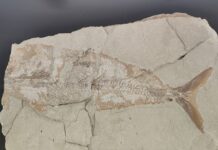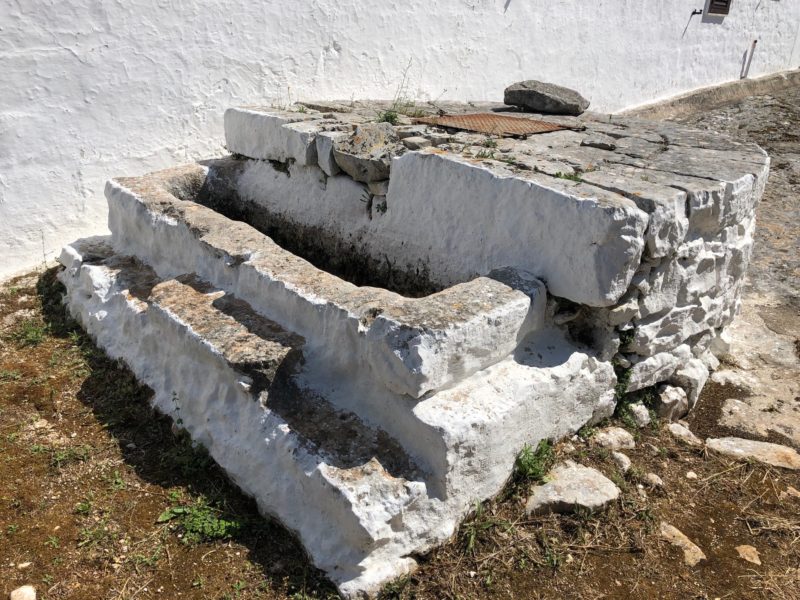The countryside around Cisternino is very fragrant: holm oaks, carob trees, strawberry trees, lentiscus trees, olive trees and rows of vines are the backdrop to dense hairpin bends where you often have to climb between ups and downs that remind you of roller coasters.

Walks between districts, specchie and trulli
 And then trulli, trulli, trulli. Moreover, the village emerges from the reliefs of the Valle d’Itria, in that portion of Puglia called Murgia dei trulli. The white cones, often in large groups to form real hamlets where until the 1950s and 1960s small, perfectly autonomous communities lived, they are the real protagonists of the area along with the farms, also inhabited throughout the year from sharecroppers and settlers and summer homes for local lords.
And then trulli, trulli, trulli. Moreover, the village emerges from the reliefs of the Valle d’Itria, in that portion of Puglia called Murgia dei trulli. The white cones, often in large groups to form real hamlets where until the 1950s and 1960s small, perfectly autonomous communities lived, they are the real protagonists of the area along with the farms, also inhabited throughout the year from sharecroppers and settlers and summer homes for local lords.

So even in the middle of the countryside, the stone returns to be the protagonist, as the art historian Cesare Brandi already pointed out: “Wherever you go, in Puglia, you see stones that aggregate, look for each other, compose themselves, as if instead of stones they were magnets”.

Dry stone walls are the guide, which for miles border vegetable gardens and vineyards, leading out of the traditional routes to the discovery of the Districts, microcosms that reveal very interesting realities, including festivals, walks and a genuine cuisine rich in typical local products.


There are many tours that we could recommend starting from those in the smaller Districs that have remained faithful to the concept that this type of agglomeration was born. As a Capitolo and Acqua Rossa, created by communities consisting of a few related family groups that lived in trulli that in turn formed villages with services such as the oven, the millstone, the farmyard and the cistern, everywhere present to witness forms of life in common.
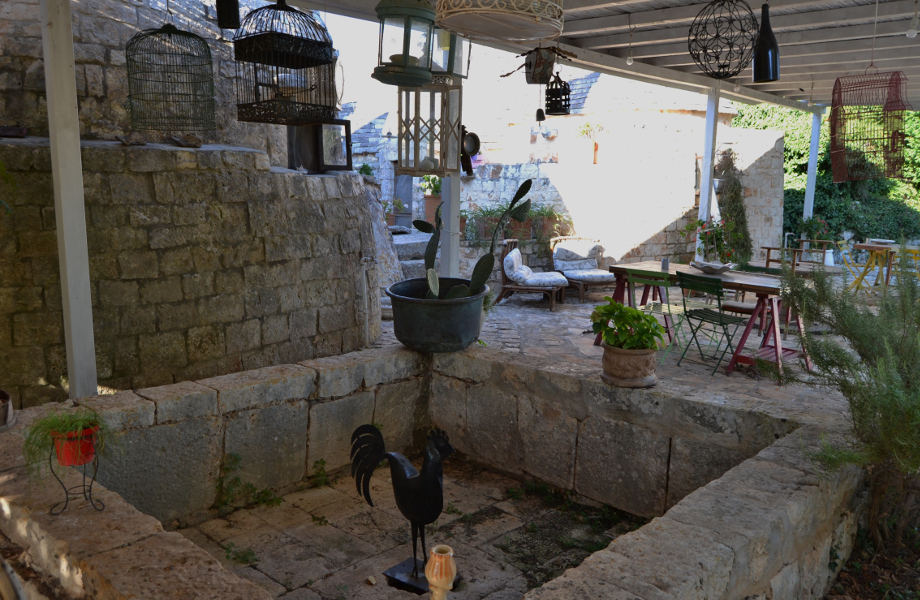
To welcome is the open space of the barnyard, a large central paved open space or left with bare rock outcropping, generally housed in the most ventilated and used by families during the threshing of cereals.
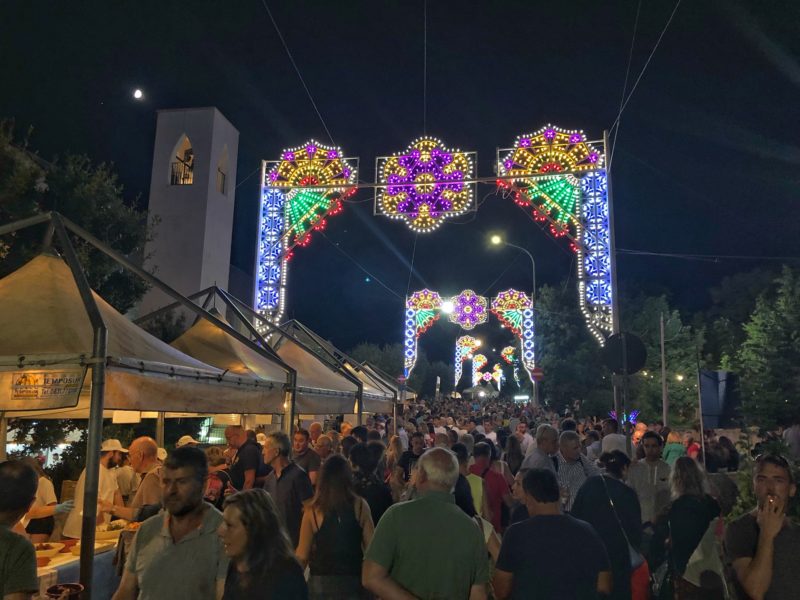
And in each district there is then the church dedicated to the patron saint, which continues to be a place of aggregation and to which still very dedicated feasts are dedicated to which bind tasty festivals that enhance local products.



As many as 38 are the hamlets of Cisternino, but the most populated are Casalini, Caranna and Marinelli, while one of the most beautiful according to us is that of Figazzano with its unmistakable profile that looks downhill from above.


In the territory of the district since 2004, the Milanese Paolo Belloni founded the Botanical Conservatory on Biodiversity “I Giardini di Pomona” which contains a collection of over 1000 fruit trees of which 350 are those of Ficus carica or fig, and has a pagan goddess like protector, Pomona, lady of the gardens and orchards. We interviewed him some time ago and here is the story of our meeting.
Heading towards Ostuni you dive into the wildest and highest part of the Cistranese countryside from where you can enjoy the marvelous view over the centuries-old Piana degli Ulivi with the blue outline of the Adriatic Sea in the background and on particularly clear days the dark line on the Albanian coast.

In this area the last district in the territory of Cisternino is Acquarossa, an authentic example of an ancient village of trulli of various shapes that hosts the Trulli Acqua Rossa bed and breakfast and where you are catapulted into another dimension. Here we were guests and we wandered among the cones, the millstone, the oven and the large farmyard with a rocky bottom, waking up fresh next morning, rested and intent on continuing to live the magic of living in a place outside the world. Soon we will tell you about our experience in the #sognidoro column.

On the border with Fasano in the Gianecchia district lies Masseria Capece, an agriturismo owned by the De Carolis-Romito family, affiliated with the Dune Costiere Regional Natural Park and also home to some events, this year it will host the closure of the Festival dei Sensi, a itinerant initiative that involves villages and districts between Martina Franca, Cisternino and Locorotondo with a rich calendar of cultural meetings.
Here, too, among the intense aromas of fruit trees planted in the beautiful fenced citrus grove, we were guests with our Otto in one of the ideal houses for those of us who travel with a four-legged dog as it has an outdoor space sheltered by a cannizzu and closed by high walls and an iron door. Soon the story on the blog.
A nice walk is the one looking for specchie, a type of construction from the VIII-VII century. B.C. formed by heaps of material from the stone remnants of the fields that the Messapi used to reach higher, so as to be able to spot enemies.

The specchia of Galassano is very ancient, today a hilly point on the border with Ostuni, used precisely for the strategic position advanced during the war in Yugoslavia in the early nineties for the placement of military instruments. The specchia Sativa in Pascarosa is undoubtedly best known, a monumental trullo-shaped dry stone formation also a sighting point in the prehistoric age, near which a long stretch of the Paretone, the great stone wall that a time divided the Messapia of the Peucetia and probably had to be over three meters high.
Has all this walking tired you? Nothing better than a stop to taste the specialties of which Cisternino is proud, such as skewers, sausages and bombette, but also cured meats like larded fillet made using pork fillet, Martina Franca capocollo born in the XVIII century century using the pork meat grown in the Valle d’Itria, the rolled pancetta and the sweet soppressata, both flavored with salt, pepper and cooked Verdeca wine.
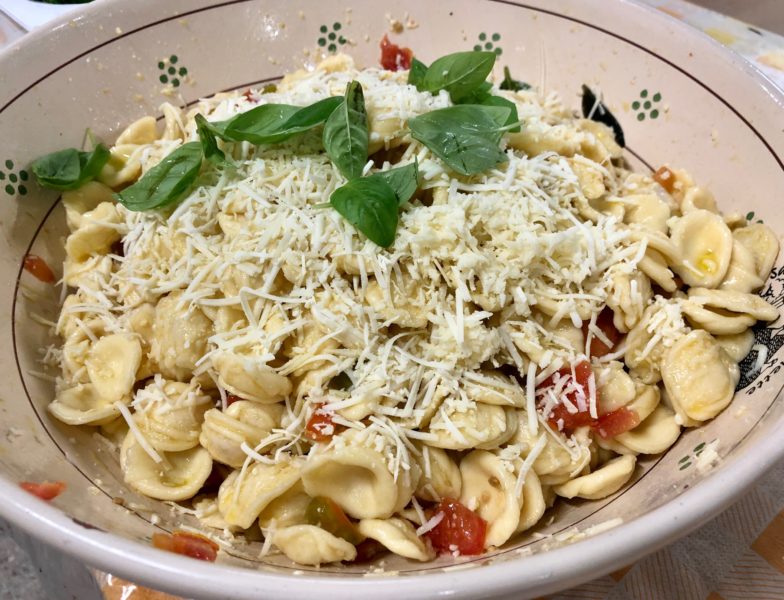
And how to say no to a plate of orecchiette? One of the oldest festivals in the surroundings of Cisternino is dedicated to the typical Apulian pasta format: this year we participated in Caranna at the XVIII edition of the Sagra delle orecchiette and we will tell you it plate after plate.

To sweeten the mouth at the end of the meal the almond desserts are inevitable: the menule atterrete (or almonds with sugar) toasted and covered with sugar, the castagnelle, flavored with cinnamon and cloves, the oldest sweets of the Cistranese confectionery tradition, and the castagname, that is their version with a sour cherry in the center.



